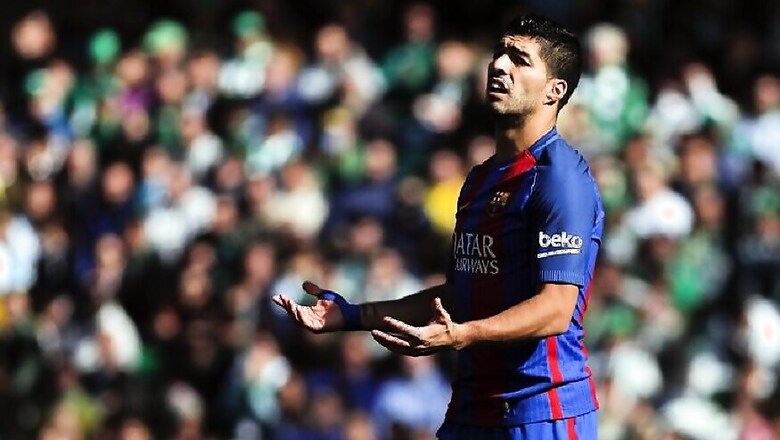
views
The likes of Lionel Messi and Luis Suarez were left fuming on Sunday as an own-goal was disallowed against their opponents Real Betis. Had the goal been rightly identified, Football Club Barcelona would have won the match with a final score of 2-1. The ‘ghost-goal’ can make a huge difference in the long run as the second in league lost a chance to catch up with their arch rivals and number one in league position at the moment, Real Madrid.
The incident has brought into light, the absence of Goal-Line Technology (or Goal Decision System) in La-Liga, one of the biggest leagues in the world. The technology is already in use in every other major European league including England, France, Germany and Italy.
First allowed to be implemented in football matches in 2012, the Goal Line Technology is either run on high-speed video cameras or on electromagnetic induction. The different forms are:
Using Hi-Speed Cameras
This technology, having been implemented in Cricket and Tennis since long, uses a network of High-speed video cameras.
The oldest of this category is HawkEye technology which uses seven cameras directed at each goal. Its software then uses Triangulation method to locate the ball and even anticipate its future trajectory.
Similarly, GoalControl uses a set of cameras across the stadium which are able to track the flight of the ball. As soon as it detects the ball crossing the goal line, a radio signal is transmitted to the referee’s watch indicating a goal.
Another system named GoalMinder places such cameras inside the goal post at the crossbars to provide visual evidence of a goal.
The Camera-based system is extensively used in Cricket and Tennis. In cricket, it is employed majorly to decide upon the leg-before-wicket decisions. As the software is able to generate the ball trajectory, it eliminates any chances of error in the decision.
Using Magnetic Field
Two other technologies make use of Electromagnetic induction to determine whether the ball has crossed the line or not.
Cairos GLT system, produced by Cairos Technologies and Adidas, makes use of wires running under the penalty box to track the ball which has an embedded sensor in it.
Meanwhile GoalRef uses similar sensors placed inside the goal frame. As soon as the ball crosses the line, a change in electromagnetic field informs the referee of the goal, again through a radio signal directed on his or her wristwatch.
The signal is transmitted to the referee within a second in each case.
Similar incidents have taken place in the past as England was disallowed a goal in the 2010 World Cup against Germany. Such disallowed goals come as a stark contrast to the technology being deployed successfully in other sports.
The Australian Open Final on Sunday, which saw Roger Federer fight against Rafael Nadal for the Cup, hugely benefitted from similar technology. The last three points of the deciding set saw three calls for review from both the ends. Roger Federer was then declared as the cup winner with the ‘Hawk-eye’ technology clearly displaying that his final shot was inside the court.




















Comments
0 comment